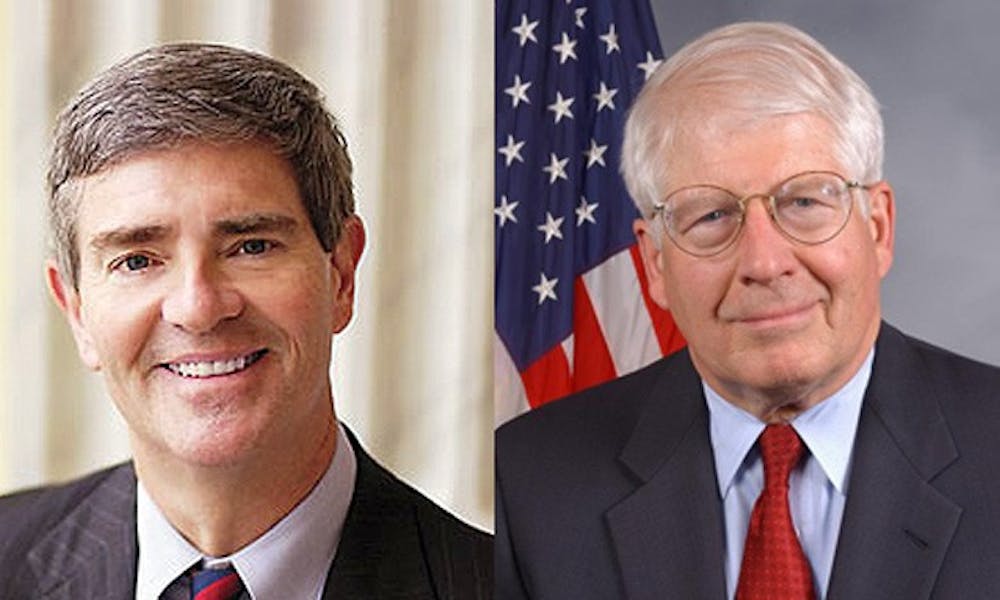The recent redistricting of North Carolina will pit Democratic allies Rep. David Price, D-N.C., and Rep. Brad Miller, D-N.C. against one another in a 2012 election for control of Duke’s congressional district.
The North Carolina General Assembly passed legislation July 28 that reshaped the fourth district to contain both Price, who already serves in this district, and Miller—who currently represents the 13th district. The University—as part of the fourth congressional district—has a particular stake in the change.
This move, commonly referred to as “double-bunking,” is an attempt to inhibit the number of Democratic districts in North Carolina, some experts and Democrats said.
The double-bunking is unprecedented in North Carolina on the congressional level, said Pope McCorkle, visiting lecturer in public policy studies. McCorkle said the new map is unreasonably shaped to enclose Democrats in the same district.
Rep. David Lewis, R-Harnett, said, however, that the redistricting is an attempt to represent the increasingly conservative state of North Carolina more fairly.
Both Miller and Price said they would seek to represent the fourth district if the redistricting bill is not overturned by the May 8 congressional primaries. Democratic party leaders and voters filed lawsuits against the redistricting Nov. 3 and Nov. 4. The redistricting bill could also be overturned by the courts.
“I am supporting the legal challengers to the redistricting, but I plan to run for congress again,” Miller said. “The districts are just completely different, but the fourth district is, realistically, the only place that either one of us would run.”
Miller added that under the new lines of the fourth district, neither he or Price has a majority of returning constituents.
“[Price] represents 33 percent of the new fourth district. I represent 31 percent—35 percent was represented by neither of us,” he said.
Price, who is leading the delegation to challenge the new district map, also said he plans to run again in the fourth district in 2012.
“I intend to stick with the fourth district through the twists and turns of redistricting,” Price added. “I am ready to run in whatever the district looks like and I am eager to represent it to the best of my ability.”
The University could face a significant loss in this double-bunking process because many constituents of Price, a former University political science professor, are now at risk of losing him as a representative, McCorkle said.
“David Price was in tune with the needs of Duke and knew Duke,” he said. “Duke loses in this process, to the extent that they may lose Price.”
An Oct. 19 polling memo from Democratic firm the Garin-Hart-Yang Research Group showed Price would take 46 percent of the vote and Miller would take 25 percent and 29 percent of voters would remain undecided. About three-fifths of the total respondents said they were familiar with both candidates. From this group, 50 percent of voters said they supported Price and 28 percent demonstrated support for Miller. Seventy-two percent of Price’s voters said they strongly support him, though 42 percent of Miller’s voters said they felt the same about Miller.
Despite the prospect of being opponents next spring, the candidates said they are allies in Congress, noting that their political differences are fewer than their similarities. They both added that, ideally, the redistricting would be overturned, and they would be given the opportunity to run in separate districts.
“We need to challenge the map,” Price said. “This is an illegal map.”
Get The Chronicle straight to your inbox
Signup for our weekly newsletter. Cancel at any time.

